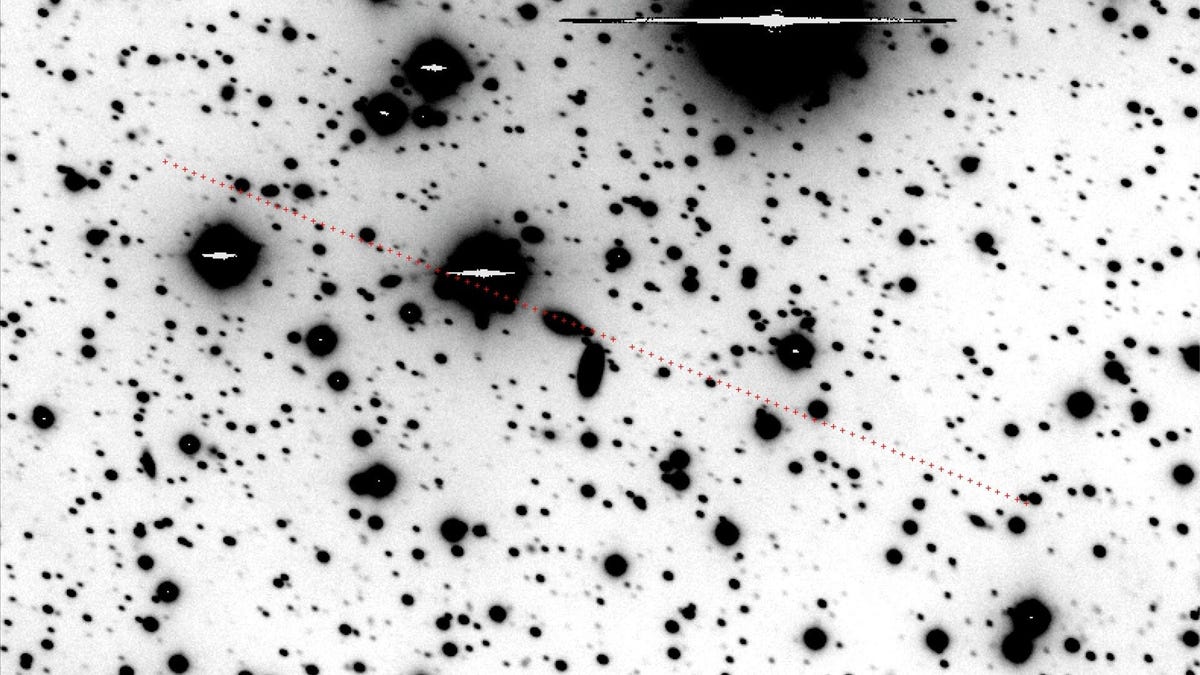All Clear: 'Risky Asteroid' Will Miss Earth in 2052
Asteroid 2021 QM1 has been removed from a risk list.
Phew. The year 2052 is looking a little brighter thanks to new data that has ruled out an impact from what the European Space Agency described as the "riskiest asteroid known to humankind in the last year." On Wednesday, ESA announced it had removed 2021 QM1 from its asteroid risk list.
ESA teamed up with the European Southern Observatory research organization and said the all-clear signal was a "result of skilled observations and analysis of the faintest asteroid ever observed with one of the most sensitive telescopes in the world."
On May 24, 2022, ESO's Very Large Telescope captured this view of the extremely faint asteroid 2021 QM1. The red circle indicates the asteroid.
The worry over this asteroid sprang up in 2021. The asteroid was first spotted in August of that year and follow-up observations suggested it had a one in 3,322 chance of smacking the Earth's atmosphere in 2052.
At about 164 feet (50 meters) in diameter, a collision would have been impressive but not devastating to the planet as a whole.
It was hard to dial in the asteroid's path because it was obscured by the brightness of the sun, making it difficult to track by telescope. It was also heading away from Earth at that point, so it was extremely faint by the time it was out of the glare.
This is where ESO's Very Large Telescope (VLT) in Chile came into play in late May.
"We had a brief window in which to spot our risky asteroid," ESO astronomer Olivier Hainaut said in a statement. "To make matters worse, it was passing through a region of the sky with the Milky Way just behind. Our small, faint, receding asteroid would have to be found against a backdrop of thousands of stars."
The VLT pulled it off. The telescope's new observations allowed scientists to more accurately dial in the asteroid's path and rule out the 2052 impact scenario.
Dropping 2021 QM1 from the risk list is worthy of a celebration, but ESA said there are still 1,377 other asteroids on the list.
Sometimes undiscovered asteroids sneak up on us, but we've gotten better and better at finding and tracking space rocks that may threaten Earth. The saga of 2021 QM1 shows that the system is working.


